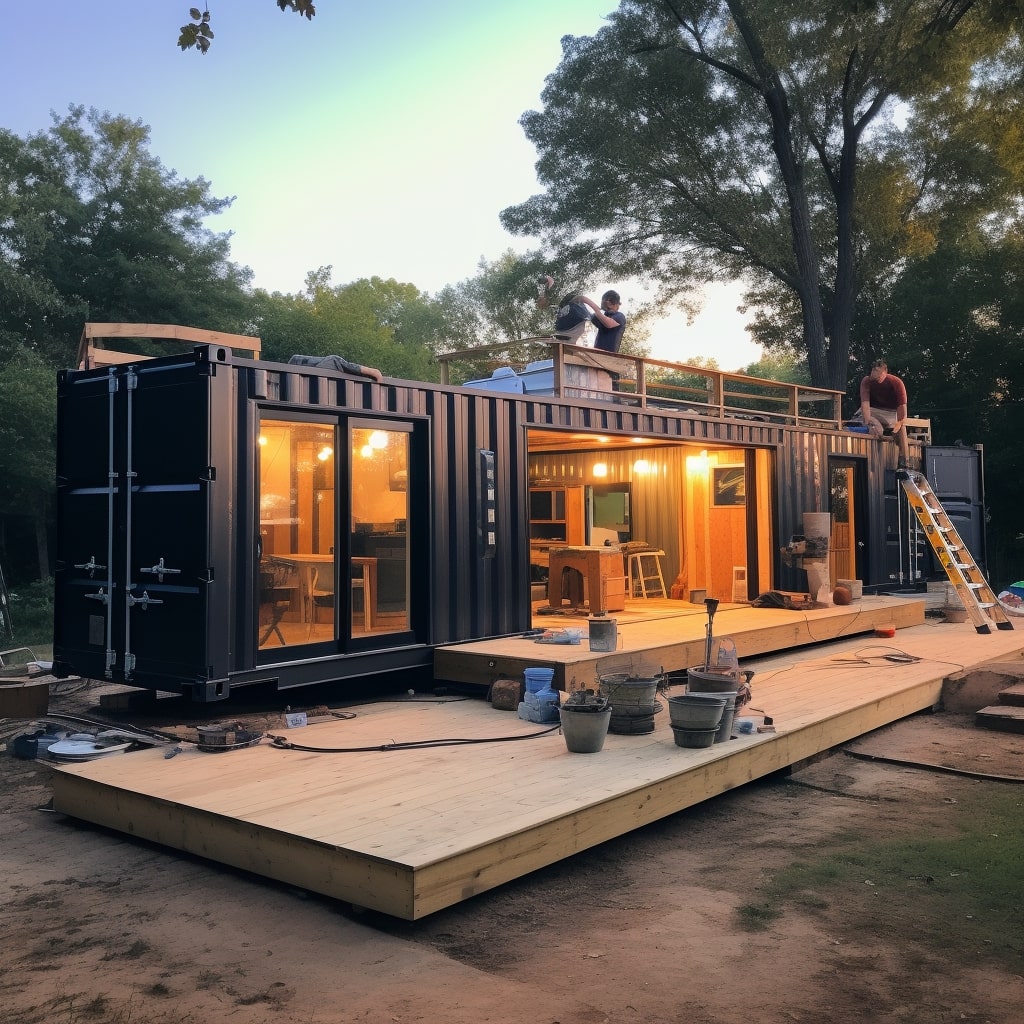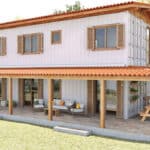The idea of repurposing old shipping containers into contemporary living spaces has emerged as a sustainable, innovative, and economically efficient housing solution. Among various sizes, the 40-foot container, offering an approximate 320 sq ft of space, stands out as a favorite. Here’s a step-by-step guide to transforming this metal box into a beautiful, modern home:
Choosing the Right Container:
-
- Inspection: Ensure the container is in good condition. Check for rust, dents, and structural damages.
- History: Inquire about the container’s past use. Avoid containers that transported hazardous materials.
- Type: For residential purposes, “one-trip” containers, which have been used only once for shipping, are ideal.
Design & Planning:
-
- Blueprint: Begin with a detailed layout plan. Decide on the number of rooms, their size, and location.
- Permissions: Check with local authorities on regulations and obtain necessary permits.
- Budgeting: Estimate costs early on. Remember, while container homes can be cost-effective, finishes and installations can add up.
Cutting & Modifying:
-
- Windows & Doors: Decide where you want natural light and entrances. Use proper safety equipment and tools for precise cutting.
- Inner Divisions: Plan partition walls if you’re aiming for multiple rooms.
Insulation & Climate Control:
-
- Climate Consideration: The type of insulation varies based on climate. Closed-cell spray foam insulation works well for both thermal insulation and preventing condensation.
- Roof: Consider adding a secondary roof or green roof to further protect against extreme weather conditions and improve insulation.
Electrical & Plumbing:
-
- Setup: With a smaller space, ensure the electrical and plumbing systems are well-designed to avoid any overlaps or complications.
- Eco-Friendly: Consider solar panels for electricity and rainwater harvesting systems for sustainability.
Interior Design & Decoration:
-
- Maximize Space: Use multi-functional furniture. A bed with storage underneath or a fold-out dining table can be space savers.
- Lighting: Opt for LED lights and strategically place them to enhance the ambiance. Add skylights for natural daylight.
- Color Palette: Light colors can make the space appear larger and more open.
Exterior & Landscaping:
-
- Rust Prevention: Apply rust-proof paint to extend the container’s life.
- Landscaping: Incorporate green spaces around the container. Plants can act as natural insulators and enhance aesthetics.
Eco-friendly Enhancements:
-
- Solar Panels: An eco-friendly way to reduce electricity bills and carbon footprint.
- Composting Toilet: Reduces water usage and provides a sustainable waste solution.
Safety Measures:
-
- Fire Safety: Use fire-resistant materials, and ensure there’s an accessible fire exit.
- Secure Locks: Given the structure, ensure doors and windows have high-quality locks for security.
Final Touches:
-
- Furnishings: Invest in quality over quantity. Given the limited space, each piece should be both functional and aesthetic.
- Outdoor Spaces: If possible, create an outdoor deck or patio. It can act as an extension of the living space.
In conclusion, transforming a 40-foot container into a home requires a blend of creativity, planning, and practicality. The end result, however, is a unique, sustainable abode that speaks volumes about modern architectural innovations.












